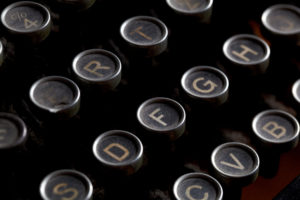I admire author Natalie D-Napoleon. She read the same article I did about “Why You Should Aim For 100 Rejections A Year” but Natalie actually put it into practice even though she is a self admitted sensitive type. Maybe there is hope for me after all! It is a really solid article with great tips and lessons learned, so I hope you will go read it.
6 Lessons Learned from a Year of 101 Rejections
 Earlier this year I came across an article by Kim Liao in which she explained “Why You Should Aim For 100 Rejections A Year.” As soon as I finished reading the piece I went to the folder in my email marked “Writing Submissions 2017” and for the first time in my life, I began to count my rejections rather than counting my acceptances. I had effortlessly amassed 53 rejections. I punched my fist in the air and whooped out loud. It was June and I was already halfway to 100 rejections for the year.
Earlier this year I came across an article by Kim Liao in which she explained “Why You Should Aim For 100 Rejections A Year.” As soon as I finished reading the piece I went to the folder in my email marked “Writing Submissions 2017” and for the first time in my life, I began to count my rejections rather than counting my acceptances. I had effortlessly amassed 53 rejections. I punched my fist in the air and whooped out loud. It was June and I was already halfway to 100 rejections for the year.
I am the sensitive type (of course, I’m a writer): I weep openly when listening to sad love songs or during Claire and Jamie’s various reunifications on Outlander, and I have cried in the past on my friend’s and husband’s shoulder when my writing has been rejected. However, before Kim Liao’s article, another woman had sent me on the journey of beginning to accept that rejection was less about failure and more about getting closer to your goals. In 2015, I attended the first BinderCon conference in L.A. BinderCon began as a “secret” Facebook group of women writers sharing contacts and information and grew into a movement and conference which supports women and gender variant writers.
At BinderCon 2015, Katie Orenstein, founder of The OpEd Project, spoke about the lack of representation of women in the media and the reasons why. As a former journalist and foreign correspondent, she had a perspective on being rejected that I could not fathom at the time. Orenstein opened my eyes to one impressive fact—that women submit their work less than men. She had the statistics to prove it and the acceptances and consequent higher representation of men in the media. In one generalized conclusion: When women and people of color get rejected, we take it personally. When white men’s work is rejected, they don’t take it as a measure of the worth of their work—they decide it simply needs to find the right home elsewhere.
Read the full post on Writer’s Digest!

 The other day I watched an old MGM movie, The Last Time I Saw Paris (1954). It stars Elizabeth Taylor at her most gorgeous and Van Johnson at his most likable. Van plays a GI in Paris on VE Day. He gets kissed in the crowd by Liz, which is not something a GI would ever forget. When he sees her later at a party, he makes a beeline for her. Soon they are in love. Then married.
The other day I watched an old MGM movie, The Last Time I Saw Paris (1954). It stars Elizabeth Taylor at her most gorgeous and Van Johnson at his most likable. Van plays a GI in Paris on VE Day. He gets kissed in the crowd by Liz, which is not something a GI would ever forget. When he sees her later at a party, he makes a beeline for her. Soon they are in love. Then married.